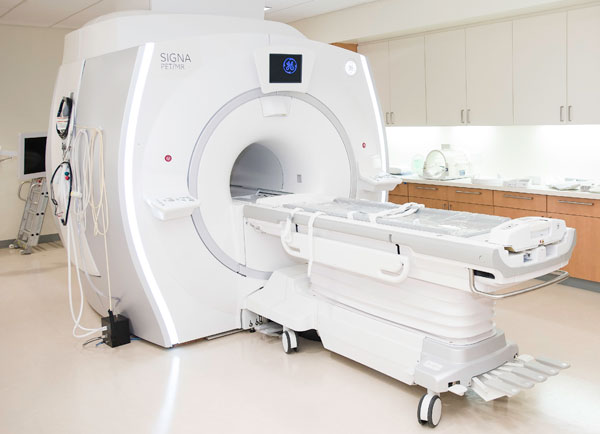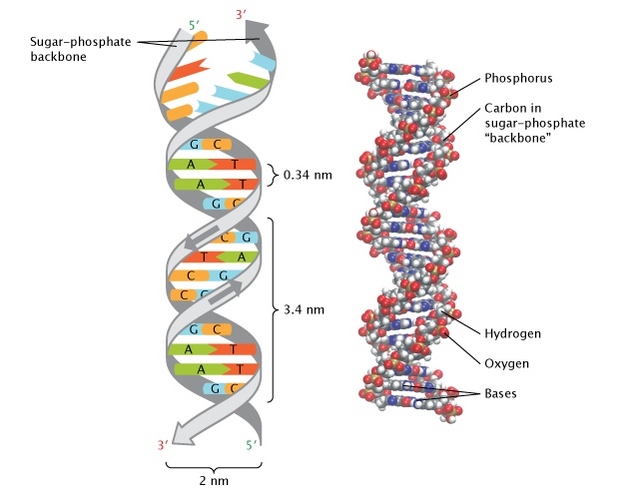Experience with MRI
Silvia Casini reflects on the use of MRI as an artistic medium, as well as the experience of MRI as a reflective, inherently artistic experience. As someone who has undergone MRI, the second part of her argument resonated with me. Casini quotes Kenneth Wilkes, who reflects that “within the tight, claustrophobic compartment...one is forced to observe [their mental states]. One has the serendipitous opportunity to explore one’s true nature” (79). Although the environment within an MRI machine is inherently stressful, eventually the body settles into this environment and the lack of outside stimulus forces one to connect with their own internal monologue. The idea of MRI as a process that allows for self-examination, through the final images but also through the actual act of being imaged, is interesting and relevant.

MRI Machine (Stanford)
Structure of Biological Systems
In “The Architecture of Life,” Donald Ingber discusses the concept of Tensegrity--the idea that systems self-structure in response to tension and pressure--in regards to organic structures. In the article, Ingber mentions that “hexagons, pentagons and spirals, predominate in natural systems” (57). These shapes are famously found in DNA, the study of which was heavily dependent on Rosalind Franklin’s use of “X-ray crystallography [to] reveal the helical shape of the molecule” (PBS). I have always been interested in these organic structures, as they are structurally intricate and incredibly effective; the disciplines of sculpture and architecture have a lot to learn from them, especially in terms of stability and material efficiency.

GMOs and Art
I am taking a class on the science and politics of GMOs, so I was interested in Eduardo Kac’s piece "Natural History of the Enigma," in which he uses a Petunia genetically engineered to express a protein sourced from his genes to comment on “the contiguity of life between different species.” Because DNA is a universal code, genes from any organisms can be combined, and this piece is a direct representation of this scientific truth. Additionally, Erwin Driessens and Maria Verstappen’s piece “Vegetable Collections,” takes a more cynical approach to the widespread use of GMOs by preserving “rejected products...of a crop that the food industry is trying to standardize.” This piece seems to comment on the loss of diversity a perceived threat of new technologies.

Casini, Silvia. “Magnetic Resonance Imaging (MRI) as Mirror and Portrait: MRI Configurations between Science and the Arts.” Configurations, vol. 19, 2011, pp. 73-99.
Driessens, Erwin and Maria Verstappen. “Vegetable Collections.” Driessens & Verstappen, https://notnot.home.xs4all.nl/morpho/vegetables/vegetables.html. Accessed 20 April 2021.
Ingber, Donald. “The Architecture of Life.” The Scientific American, 1997, pp. 48-57.
Kac, Eduardo. “Natural History of the Enigma.” BioArt, http://www.ekac.org/nat.hist.enig.html. Accessed 20 April 2021.
Pray, Leslie. “The double-helical structure of DNA.” Scitable, https://www.nature.com/scitable/topicpage/discovery-of-dna-structure-and-function-watson-397/. Accessed 20 April 2021.
“Stanford Health Care's PET/MRI Scanner.” Stanford Health Care, https://stanfordhealthcare.org/medical-tests/p/pet-mri-scan.html. Accessed 20 April 2021.
“The Discovery of DNA’s Structure.” PBS, https://www.pbs.org/wgbh/evolution/library/06/3/l_063_01.html. Accessed 20 April 2021.


No comments:
Post a Comment